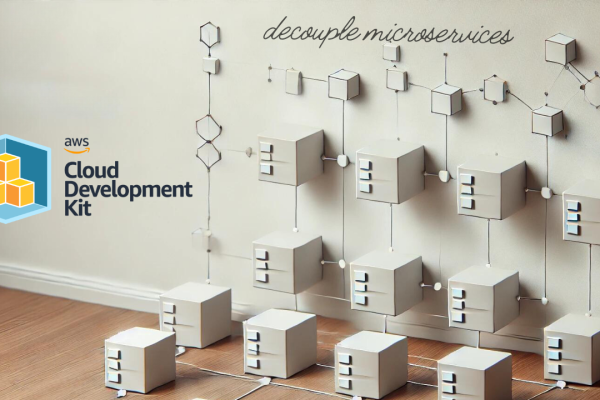Using Infrastructure as Code (IaC) brings significant advantages that can revolutionise how organisations manage their IT environments. IaC enables teams to automate the provisioning and management of infrastructure, leading to faster and more reliable deployments.
What is Infrastructure as Code (IaC)?
Infrastructure as Code (IaC) is a key DevOps practice that involves managing and provisioning infrastructure through machine-readable scripts or code, rather than through physical hardware configuration or interactive configuration tools. This approach allows for automation consistency in the management of IT infrastructure.
IaC enables the use of version control, continuous integration, and continuous delivery pipelines (CI/CD) ensuring that infrastructure changes are consistent, repeatable, and transparent. By treating infrastructure as software, organisations can apply the same rigour to infrastructure management they do to application development, leading to more reliable and predictable infrastructure deployments.
Key concepts of Infrastructure as Code (IaC)
Some key concepts need to be understood before going deeper into IaC benefits:
1. Declarative vs. Imperative:
- Declarative: Specifies what the final state should be, and the IaC tool determines how to achieve that state.
- Imperative: Specifies how to achieve the desired state through a sequence of commands.
2. Configuration management tools:
- Tools such as Ansible, Puppet, and Chef are used to manage and automate infrastructure configurations.
3. Orchestration tools:
- Tools like Terraform, AWS CloudFormation, and Google Cloud Deployment Manager are used to automate the provisioning of infrastructure.
4. Version control:
- IaC scripts are stored in version control systems (like Git), allowing teams to track changes, collaborate, and revert to previous configurations if necessary.
5. Idempotency:
- IaC ensures that applying the same configuration multiple times results in the same outcome, preventing unintended changes.
Now that we understand what IaC is, let’s have a closer look at its benefits.
Benefits of Infrastructure as Code (IaC)
There are several benefits of using Infrastructure as Code (IaC) and in this article, we will highlight some of them:
1. Consistency and standardisation
IaC ensures that infrastructure configurations are standardised and consistent across all environments. This reduces the risk of discrepancies that can lead to unexpected behaviour in production.
2. Version control and collaboration
Using version control systems like Git, IaC allows teams to track changes, collaborate more effectively, and revert to previous configurations if needed. It records changes to files over time improves collaboration and prevents conflicts, it also enables backup and recovery if something goes wrong. This brings transparency, repeatability, efficiency and accountability to infrastructure management.
3. Automation and efficiency
Automation of infrastructure provisioning reduces manual intervention, which minimizes the potential for human error. This also accelerates the deployment process, enabling faster delivery of features and updates.
4. Scalability and flexibility
IaC makes it easier to scale infrastructure up or down based on demand. Automated scripts can also quickly provision new resources or decommission unused ones, optimising resource utilisation.
5. Cost management
By automating the creation and destruction of resources, IaC helps in efficient resource utilisation and cost management. Temporary environments can be up for testing and destroyed afterwards, reducing unnecessary expenditure.
6. Disaster recovery
IaC scripts can be used to quickly recreate infrastructure in case of a failure, ensuring robust disaster recovery and business continuity plans.
Comparing IaC tools: Terraform vs. AWS CloudFormation
Several tools and frameworks facilitate IaC, each with its strengths and ideal use cases. Two of the most popular IaC tools are Terraform and AWS CloudFormation. Let’s have a look at their advantages and disadvantages.
Terraform
Terraform, developed by HashiCorp, is an open-source IaC tool that allows users to define infrastructure using a high-level configuration language called HashiCorp Configuration Language (HCL). It supports multiple cloud providers and services, making it very versatile.
Advantages
- Multi-cloud support: Terraform can manage infrastructure across various cloud providers such as AWS, Azure, Google Cloud. That makes it ideal for multi-cloud strategies.
- Modular and reusable code: It supports the use of modules, which are reusable components that can be shared and versioned.
- State management: It maintains the state of the infrastructure, allowing for efficient change management and drift detection.
- Community and ecosystem: It also has a strong community and a rich ecosystem of plugins and integrations.
Disadvantages
- Complexity: Managing state files and dealing with potential state conflicts can be complex.
- Learning curve: HCL, while powerful, can have a steeper learning curve for beginners.
AWS CloudFormation
AWS CloudFormation is a native IaC service provided by Amazon Web Services (AWS). It allows users to define AWS resources using JSON or YAML templates and automate their provisioning and management.
Advantages
- AWS integration: AWS CloudFormation is tightly integrated with AWS services, offering seamless and optimised resource management within the AWS ecosystem.
- Simplicity: AWS CloudFormation provides a straightforward way to describe and provision AWS resources, making it easier for users already familiar with AWS.
- Change sets: AWS CloudFormation allows users to preview changes before applying them, reducing the risk of unintended modifications.
Disadvantages
- AWS specific: AWS CloudFormation is limited to AWS resources, making it less suitable for multi-cloud environments.
- Template complexity: For large and complex infrastructures, CloudFormation templates can become lengthy and difficult to manage.
Best practices for implementing IaC
Now let’s look at some best practices for implementing IaC in your company.
Use version control systems (VCS)
Store IaC scripts in version control systems like Git to enable tracking, collaboration, and rollback capabilities.
Modularise code
Break down infrastructure code into reusable modules to promote reusability, maintainability, and readability.
Automate testing and validation
Implement automated testing and validation for IaC scripts to catch errors early and ensure that configurations meet expected standards.
Practise continuous integration/continuous deployment (CI/CD)
Integrate IaC with CI/CD pipelines to automate the provisioning and deployment process, ensuring consistency and reducing manual errors.
Document and comment code
Thoroughly document IaC scripts and use comments to explain the purpose and functionality of different sections, making it easier for others to understand and maintain the code.
Implement state management and backups
For tools like Terraform, manage state files carefully and implement regular backups to prevent data loss and ensure recoverability.
Enforce security best practices
Incorporate security best practices into IaC scripts, such as defining privilege access policies and encrypting sensitive data.
Case scenario: Environment provisioning with AWS CloudFormation
Let’s have an example of a company that will use AWS CloudFormation to create multiple development environments.
Company: Financial services firm
Challenge: The firm needs to create multiple identical development and testing environments for its various software development teams. These environments should mimic the production setup as closely as possible.
Solution: IaC Tool AWS CloudFormation
Implementation:
- Develop CloudFormation templates that define the infrastructure required for the development and testing environments, including EC2 instances, RDS databases, VPCs, and security groups.
- Use CloudFormation stacks to deploy and manage these environments, ensuring they are identical to the production environment.
- Implement automated deletion of these environments after testing is complete to optimise costs.

Figure 1. Environment template
Figure 1. Environment template
Outcome:
- The firm can quickly provision and decommission environments, enabling faster development cycles.
- Ensures consistency across development, testing, and production environments, reducing bugs and deployment issues.
- Optimises resource usage and costs by automating environment management.
Conclusion
Infrastructure as Code (IaC) is a transformative approach in the DevOps toolkit, bringing the principles of software development to infrastructure management. By adopting IaC, organisations can achieve greater consistency, automation, and scalability in their infrastructure provisioning processes. Whether using Terraform for its multi-cloud capabilities or AWS CloudFormation for its AWS integration, the key to successful IaC implementation lies in adhering to best practices, ensuring security, and fostering a culture of collaboration and continuous improvement.
Need help? Contact us and one of our experts will be right there to help you on your journey!
Contact our team and discover the cutting-edge technologies that will empower your business.

Talk to our experts!
contact us





